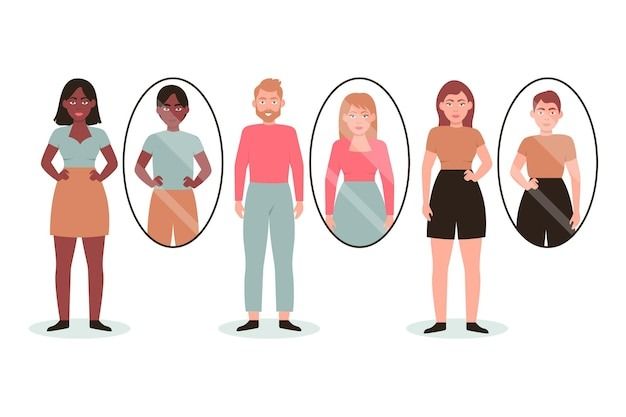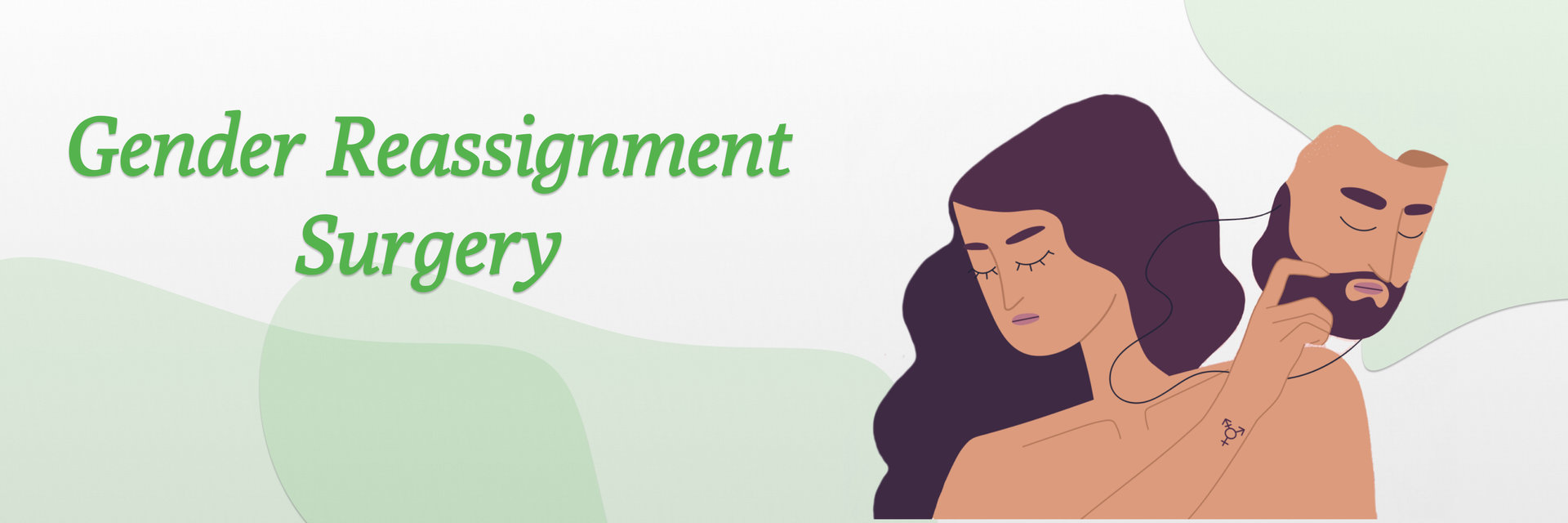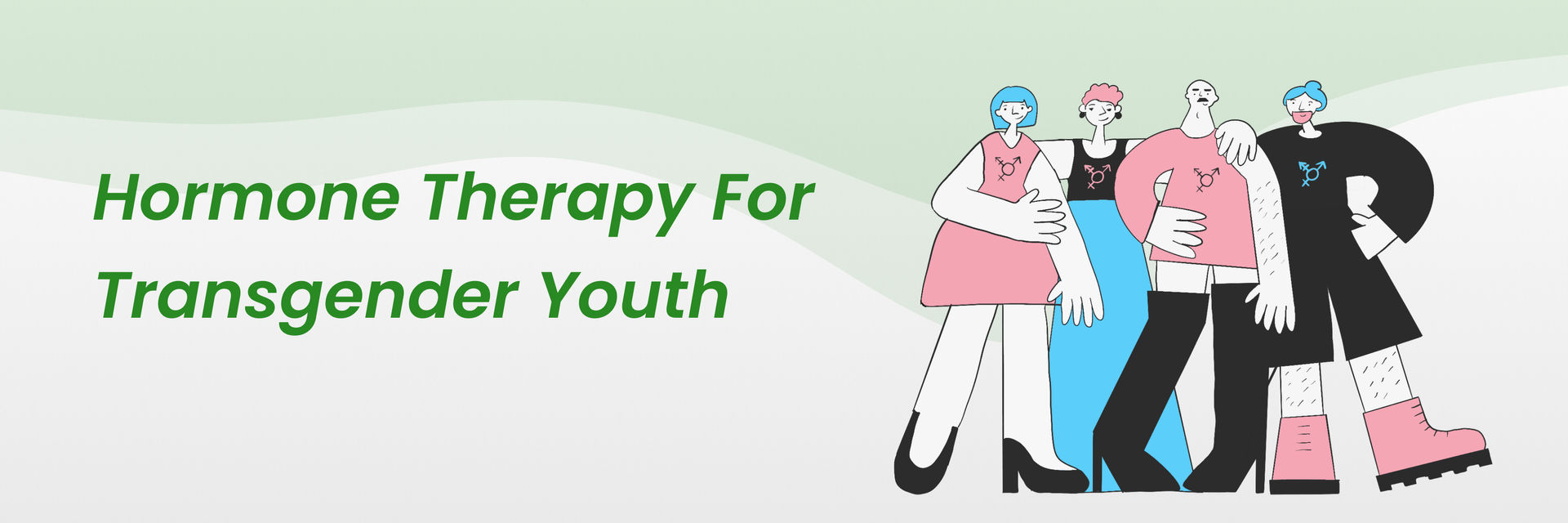Overview of Mastectomy Transgender
According to the American Society of Plastic Surgeons, there were over 3,200 gender-affirming mastectomy procedures performed in the western nations such as the United States in 2020. The number of these procedures has been steadily increasing in recent years, highlighting the growing demand for gender-affirming surgeries.
Like any surgery, mastectomy MtF has potential risks and problems, but it can also have positive effects on a person's mental and physical well-being. As it helps to align their physical appearance with their gender identity.
Your well-being is our priority - call us to book your appointment today
How does it work?
Want to know,
How can you get your dream body?
Mastectomy transgender involves breast removal by removing tissue and excess skin to create a more masculine chest appearance. The procedure can be performed using various techniques, including double incision mastectomy (double mastectomy ftm), peri-areolar mastectomy, keyhole mastectomy, body contour, and more.
For whom and when is Mastectomy Transgender recommended?
Are you a good fit for the surgery?
Get your answer here.
Mastectomy top surgery is recommended for those who want to look more like a man or wish to have a more masculine chest appearance. The eligibility for this surgery is determined on a case-by-case basis and is usually based on factors such as overall health, age, and the individual's specific goals for surgery.
Types of Mastectomy Transgender
There are various types of gender affirming mastectomy procedures, including:
| Double Incision Mastectomy- | Involves the removal of breast tissue through two horizontal incisions across the chest. Allows for more extensive tissue removal. This type of surgery is usually recommended for those with larger breast sizes. |
| Peri-Areolar Mastectomy | Involves making an incision around the areola to remove breast tissue, making it an ideal option for individuals with smaller breasts. |
| Keyhole Mastectomy | Involves the removal of breast tissue through a small incision made under the nipple, which may be an ideal option for individuals with less breast tissue helps in gender mastectomy.
|
Benefits/Risks of Mastectomy Transgender
It is essential to evaluate the benefits and risks before making the final decision!
So, let’s have a look at the benefits and risks of mastectomy transgender!
| Benefits: | Risks: |
Improved chest appearance that is more in line with the individual's gender identity
| Bleeding or infection at the incision site
|
Reduced feelings of gender dysphoria
| Loss of sensation or numbness in the chest area
|
| Increased self-confidence and self-esteem | Scarring or asymmetry |
How to prepare for Mastectomy Transgender?
Before undergoing mastectomy surgery for transgender, patients will typically have a consultation with their surgeon to discuss their goals for surgery and any questions or concerns they may have. Patients will also need to undergo preoperative testing and follow specific instructions regarding fasting and medication.
Procedure for Mastectomy Transgender
Okay so have you followed the above steps and are all ready for the procedure?
Great! Let’s begin with the procedure then!
The procedure for mastectomy transgender typically involves the following steps:
| Step | Details |
| Anaesthesia | General anaesthesia is typically used for this procedure to ensure the patient is comfortable and pain-free throughout the surgery. |
| Incision | The surgeon will make an incision based on the chosen technique, which may be either horizontal or vertical across the chest. |
| Breast tissue removal | The surgeon will then remove breast tissue and excess skin to create a more masculine chest appearance. |
| Nipple repositioning | Depending on the chosen technique, the nipple may be repositioned to create a more natural appearance. |
| Closing incisions | The incisions will be closed with sutures or surgical glue.
|
Patients may experience pain and discomfort following the procedure, which can be managed with medication. The duration of the procedure can vary depending on the technique used, but it typically takes between 2-4 hours. Most patients will need to stay in the hospital for at least one night following the procedure.
Are you done with the procedure and wondering what next?
Here are the details!
After the procedure.
After mastectomy ftm surgery, expect some discomfort and follow post-operative guidelines from your surgeon, such as keeping the surgical site clean, taking prescribed medications, and avoiding activities that cause strain for a few weeks. Attend follow-up appointments to monitor your healing. The recovery process and timeline vary depending on the individual and the type of surgery performed.
However, here are some general guidelines:
Recovery:
- Pain and discomfort are normal after surgery, and pain medication may be prescribed by the doctor.
- Swelling and bruising are common and may take several weeks to subside.
- Patients may be required to wear compression garments or bandages to help reduce swelling and support the chest area.
- Patients should avoid lifting heavy objects or performing strenuous activities for several weeks to avoid complications.
Side Effects:
- Bleeding, infection, and scarring are potential risks of any surgery, including mastectomy transgender.
- Some patients may experience numbness or tingling in the chest area, which may resolve over time.
Postoperative Guidelines:

- Patients should follow any instructions provided by their doctor, such as keeping the incision site clean and dry and avoiding certain activities.
- Attend all scheduled follow-up appointments with the doctor.
- Monitor for signs of infection, such as fever or redness and report any concerns to the doctor.
Resuming Activities:

- Patients should avoid lifting heavy objects or performing strenuous activities for several weeks to allow for proper healing.
- Light activity, such as walking, may be resumed as early as a few days after surgery.
- More strenuous activities, such as weightlifting or running, should be avoided for at least six weeks.
It's important to note that recovery time and guidelines can vary for each individual, and patients should consult with their doctor regarding their specific situation. Following postoperative guidelines and attending follow-up appointments are important for a safe and successful recovery.
Results
Now, let’s discuss the section we all are the most concerned about- the results!
The results of mastectomy transgender can be significant and life-changing for those who undergo the procedure. Patients may experience improved body image and self-esteem, as well as reduced feelings of gender dysphoria. The improvements are usually visible immediately after the procedure, although full recovery and final results may take several months. The results are permanent and do not require additional surgery.
Success Rate of Mastectomy Transgender
The success rate of mastectomy transgender is generally high with 85% positive results.
Yes, you read that right!
The success rate can vary depending on various factors such as the surgeon's experience, the patient's health status, and the type of procedure performed. However, the vast majority of patients report satisfaction with the results of their surgery.
Relapse Rate of Mastectomy Transgender
Worried about the relapse rates?
Relax!

There is a very low relapse rate for mastectomy transgender procedures. Once the breast tissue is removed, it is unlikely to regrow. However, some patients may experience complications, such as infection or scarring, which may require additional treatment.
Are you wondering whether there are any other treatments used in conjunction with mastectomy transgender?
Other Treatments Used Along with Mastectomy Transgender
Mastectomy transgender is often combined with hormone therapy and other gender-affirming procedures to achieve the desired physical appearance and reduce gender dysphoria. Hormone therapy may be used to alter secondary sex characteristics such as voice, body hair, and fat distribution. Some patients may also opt for additional procedures such as facial feminization surgery or genital reconstruction surgery.
Now, let’s discuss,
Cost of Mastectomy Transgender and Insurance Coverage
The ftm mastectomy cost can vary depending on the type of procedure, surgeon's fees, and location. The cost in India is generally lower than in many other countries, with the average cost ranging from INR 50,000 to INR 1,50,000.
Want to inquire about personalised treatment expenses? Don't hesitate. Talk to us today.
The cost may be covered by insurance if deemed medically necessary, but coverage can vary depending on the insurance plan and the individual's policy. Patients are encouraged to check with their insurance provider to determine coverage.
Confused between a mastectomy and top surgery and wondering whether they are the same or are they different?
Then the below section will clear all your confusion!
Mastectomy vs Top Surgery
| Aspect | Mastectomy for Transgender Individuals | Top Surgery for Transgender Individuals |
| Purpose | To remove breast tissue and create a masculine chest contour. | To create a more masculine or feminine chest contour, depending on the individual's desired gender expression. |
| Gender Affirmation | Typically performed on transgender men or non-binary individuals who wish to have a more masculine appearance. | Typically performed on transgender individuals seeking a more masculine or feminine appearance, depending on their gender identity. |
| Procedure | A surgical procedure that removes breast tissue, usually through an incision around the nipple or under the breast. | A group of procedures, including breast augmentation, breast reduction, or breast reconstruction, depending on the desired outcome. |
| Recovery Time | Recovery time typically ranges from several weeks to a few months, with restrictions on physical activity during this time. | Recovery time can vary depending on the specific procedure performed, but usually ranges from several weeks to a few months. Restrictions on physical activity are also common during the recovery period. |
| Insurance Coverage | Mastectomy is often covered by insurance plans as a medically necessary procedure for transgender individuals. | Top surgery may or may not be covered by insurance plans, depending on the specific procedure performed and the individual's insurance policy. |
| Potential Risks | Potential risks include bleeding, infection, scarring, and changes in nipple sensation. | Potential risks include bleeding, infection, scarring, changes in nipple sensation, and complications associated with anaesthesia. |
It's important to note that the decision to undergo either mastectomy or top surgery is a personal one that should be made in consultation with a healthcare provider who is knowledgeable about transgender healthcare.
Mastectomy transgender and top surgery are often used interchangeably but are different procedures. Mastectomy transgender refers to the removal of breast tissue in order to reduce gender dysphoria and achieve a more masculine appearance.
Top surgery refers to the alteration of the chest to achieve a more masculine or feminine appearance, which can include breast reduction or augmentation, and chest contouring. While mastectomy transgender is typically used for FTM (female-to-male) gender confirmation, top surgery can be used for both FTM and MTF (male-to-female) gender confirmation.
Have some more questions related to mastectomy transgender?
Then do not miss reading the below FAQs.
You might get an answer to your question!
FAQs
Q: Can mastectomy transgender be reversed?
A: Mastectomy transgender is a permanent procedure that removes breast tissue and cannot be reversed.
Q: What is the difference between top surgery and mastectomy?
A: Mastectomy transgender refers specifically to the removal of breast tissue, while top surgery can include a variety of procedures to alter the chest appearance, including breast reduction or augmentation and chest contouring.
Q: Is mastectomy for gender reassignment the same as breast removal for gender reassignment?
A: Yes, mastectomy transgender is another term for breast removal as part of gender reassignment.
Q: How much does mastectomy transgender cost for FTM
A: The cost in India is generally lower than in many other countries, with the average cost ranging from INR 50,000 to INR 1,50,000.
Q: Can breasts grow back after mastectomy?
A: Breast tissue that has been surgically removed during a mastectomy generally does not grow back on its own. However, in rare cases, there may be regrowth of breast tissue due to incomplete removal or hormonal changes.
Q: Do they remove nipples during mastectomy?
A: In a mastectomy procedure, the nipples may or may not be removed depending on the specific type of mastectomy being performed and the individual's medical needs.
In a total mastectomy (also called a simple mastectomy), the entire breast tissue is removed but the nipple and areola are left intact.
Take charge of your health and your life. Contact us today!
References







